Fun Moments With Our Record Breaking Astronaut
Fun Moments with Our Record Breaking Astronaut
Astronaut Scott Kelly has broken the record for longest time spent in space by a U.S. astronaut. He has spent a cumulative of 383 days in space over the course of four missions. What better way to celebrate than to highlight some of his fun moments on the internet:
A question from the president during a recent TweetChat:

Astronaut Scott Kelly occasionally hosts TweetChats from the International Space Station. During a recent chat, he happened to get a question from someone who lives at 1600 Pennsylvania Avenue! HERE’s a recap from a similar chat from the station.
Tackling the tough questions during interviews:

During an interview with Katie Couric, Kelly explained what a day on the space station is really like…including the chores he can and can’t do.
The pros and cons of having roommates:

The International Space Station is an orbiting laboratory where an international crew live, work and conduct valuable research.
Getting supplies from cargo ships:

Living on the space station requires food, water and supplies. All of these things, plus experiments and other essentials are delivered to the crew via cargo ship. Learn more about our commercial resupply program HERE.
Make sure to follow us on Tumblr for your regular dose of space: http://nasa.tumblr.com
More Posts from Intergalacticnerd and Others

Thankful for views like this one —————————————– Camera Info •Canon 5D Mk3 •Canon 16-35mm F2.8 •16mm •F2.8 Aperture •30" Exposure •6400 ISO •WB3785 —————————————–#justinhartney #nature #pnwwonderland #nightphotography #ThatPNWLife #Ourlonelyplanet #traveloregon #eugene #universityoforegon #uoregon #feedbacknation #thatNWadventure #wildernessculture #modernoutdoors #watchthisinstagood #folkmagazine #theearthoutdoors #thevisualcollective #oregonexplored #beautifuldestinations #nwc10k #vsco #wishyouwerenorthwest #visitbend #1859Oregon #canon_photos #llbeanmoment #bendmag #optoutside #columbia1938 (at Bend, Oregon)









We’ve always defined ourselves by the ability to overcome the impossible. And we count these moments. These moments when we dare to aim higher, to break barriers, to reach for the stars, to make the unknown known. We count these moments as our proudest achievements. But we lost all that. Or perhaps we’ve just forgotten that we are still pioneers. And we’ve barely begun. And that our greatest accomplishments cannot be behind us, because our destiny lies above us.
Interstellar (2014) dir. Christopher Nolan


T-2 hours - JASON-3 and Falcon 9 stand tall on the west coast. For the second time in its history, a SpaceX Falcon 9 v1.1 rocket stands at Vandenberg Air Force Base’s SLC-4E ready for launch. The 224 foot tall rocket will carry the joint NASA/NOAA JASON-3 satellite to study Earth’s oceans. Of the 20 flights of the Falcon 9 to date, all but one has occurred from Cape Canaveral’s SLC-40. The inaugural flight of Falcon 9 v1.1, Cassiope in September 2013, was also the debut of the vehicle on the west coast. The JASON-3 mission will see the final v1.1 Falcon 9 performing the vehicle’s second west coast flight. Liftoff will occur in the middle of a 30-second launch window, at 1:42 pm EST (10:42 am PST). NASA TV coverage started at 11 am EST. Watch the launch live here. p/c: SpaceX/NASA
Solar System: 2016 Preview
What do we have planned for 2016? A return to the king of planets. A survey of mysterious Ceres. More postcards from Pluto. Anyone who follows solar system exploration in 2016 is in for quite a ride. Last year was one for the record books – and now here are 10 things to look forward to in the new year. See also: what we have planned agency wide for 2016.
Juno Arrives at Jupiter

July 4, 2016 is arrival day for the Juno mission, the first sent expressly to study the largest planet in the solar system since our Galileo mission in the 1990s. Humans have been studying Jupiter for hundreds of years, yet many basic questions about the gas world remain: How did it form? What is its internal structure? Exactly how does it generate its vast magnetic field? What can it tell us about the formation of other planets inside and outside our solar system? Beginning in July, we’ll be a little closer to the answers.
OSIRIS-REx Takes Flight
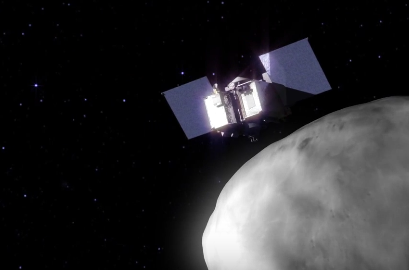
The OSIRIS-REx mission, short for Origins-Spectral Interpretation-Resource Identification-Security-Regolith Explorer, sets sail for an asteroid in September. The spacecraft will use a robotic arm to pluck samples from the asteroid Bennu to help better explain our solar system’s formation and even find clues to how life began.
Dawn Sees Ceres Up Close

After an odyssey of many years and millions of miles, in December the Dawn spacecraft entered its final, lowest mapping orbit around the dwarf planet Ceres. The intriguing world’s odd mountains, craters and salty deposits are ready for their close-ups. We can expect new images of the starkly beautiful surface for months.
Cassini Commences Its Grand Finale

In late 2016, the Cassini spacecraft will begin a daring set of orbits called the Grand Finale, which will be in some ways like a whole new mission. Beginning this year and extending into next, the spacecraft will repeatedly climb high above Saturn’s poles, flying just outside its narrow F ring 20 times. After a last targeted Titan flyby, the spacecraft will then dive between Saturn’s uppermost atmosphere and its innermost ring 22 times. As Cassini plunges past Saturn, the spacecraft will collect rich and valuable information far beyond the mission’s original plan.
New Horizons Sends More Postcards from Pluto

We have stared slack-jawed at the images and discoveries from last year’s Pluto flyby, but the fact is that most of the data that New Horizons collected remains on board the spacecraft. In 2016, we’ll see a steady release of new pictures — and very likely some expanded answers to longstanding questions.
Mars Missions March Forward
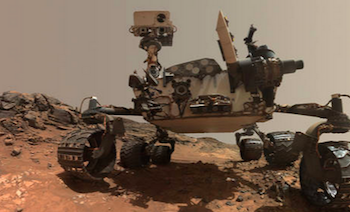
With five of our missions continuing their Martian quests, 2016 should be a good year for discoveries on the Red Planet.
Mars Odyssey
Mars Opportunity
Mars Reconnaissance Orbiter
Mars Curiosity
MAVEN
Mercury Transits the Sun

A transit is a very rare astronomical event in which a planet passes across the face of the sun. In May, Mercury will transit the sun, on of only thirteen Mercury transits each century on average.
LRO Keeps an Eagle Eye On the Moon

The Lunar Reconnaissance Orbiter (LRO) will extend its run in 2016, scanning the moon’s surface with its sharp-eyed instruments, investigating everything from lava tube skylights to changes at the Apollo landing sites.
Spacecraft Fly Under Many Flags

Our partner agencies around the world will be flying several new or continuing planetary missions to destinations across the solar system:
Akatsuki at Venus
ExoMars
Mars Express
Mars Orbiter Mission
Rosetta at Comet 67/P
Technology Demonstration Missions Push the Envelope
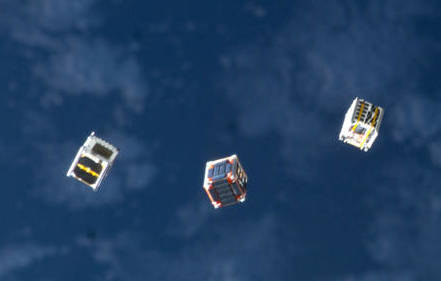
We’re always looking for new frontiers on distant worlds, as well as the technology that will take us there. This year, several missions are planned to take new ideas for a spin in space:
Deep Space Atomic Clock
NODES
LDSD
Make sure to follow us on Tumblr for your regular dose of space: http://nasa.tumblr.com
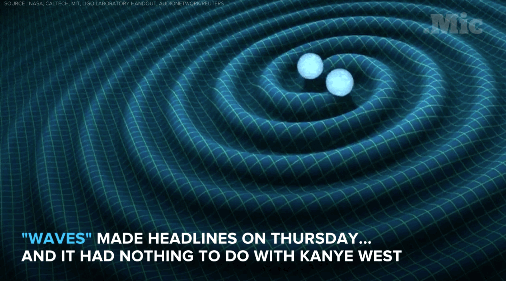

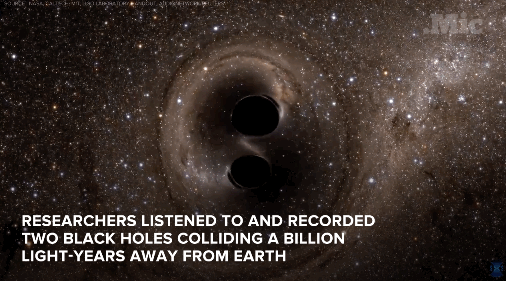


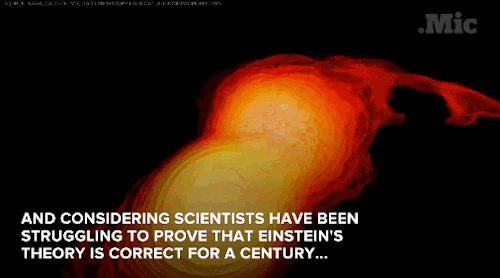

Gravitational waves are real — and that’s a huge f***ing deal!
A century ago, Albert Einstein theorized there was such a thing as a fabric of space and time — that the universe was malleable, and that large objects and events would cause it to bend.
He was right. From studying the signals emanating from the merging of two black holes — have separate masses equal to 36 and 29 suns — scientists with the Laser Interferometer Gravitational-Wave Observatory were able to observe gravitational waves. Their measurements matched expectations of what Einstein predicted in his General Theory of Relativity.
Follow @the-future-now

Astron'art ^_^
Colors of Earth
When we think of our globe from a distance, we generally visualize two colors: blue and green. Water and land. Mostly water, consequently, our planet’s nickname of the blue marble.
Traveling around the globe every 90 minutes covering millions of miles with a focused lens on our beautiful planet from 250 miles above, I’ve captured many beautiful colors beyond blue and green that showcase Earth in new and interesting ways. Some colors are indicative of nature like desert sands and weather like snow. Other colors tell stories of Earth’s climate in bright splashes of yellows and greens of pollen and muted grey tones and clouded filters of pollution.
Blue and green still remain vivid and beautiful colors on Earth from the vantage point of the International Space Station, but here are some other colors that have caught my eye from my orbital perspective.

African violet

Bahamas blues

Tropical in Africa

Yellow desert

Orange in Egypt

Red surprise

Snow white
Follow my Year In Space on Twitter, Facebook and Instagram!

Comet PanSTARRS and the Helix Nebula : Its rare that such different objects are imaged so close together. Such an occasion is occurring now, though, and was captured two days ago in combined parallel exposures from the Canary Islands of Spain. On the lower right, surrounded by a green coma and emanating an unusually split blue ion tail diagonally across the frame, is Comet C/2013 X1 . This giant snowball has been falling toward our Sun and brightening since its discovery in 2013. Although Comet PannSTARRS is a picturesque target for long-duration exposures of astrophotography, it is expected to be only barely visible to the unaided eye when it reaches its peak brightness in the next month. On the upper left, surrounded by red-glowing gas, is the also-picturesque Helix Nebula. At 700 light years distant, the Helix is not only much further away than the comet, but is expected to retain its appearance for thousands of years. via NASA
js



Gravitational lensing
“Spacetime tells matter how to move; matter tells spacetime how to curve”: when spacetime is distorted by very massive objects, it can create a lensing effect, distorting light coming from the source. Here are some images capturing this effect.
All images from NASA/ESA & Hubble
-
 finesureokay liked this · 6 years ago
finesureokay liked this · 6 years ago -
 astrrophile reblogged this · 6 years ago
astrrophile reblogged this · 6 years ago -
 astrrophile liked this · 6 years ago
astrrophile liked this · 6 years ago -
 goodiebluebox liked this · 6 years ago
goodiebluebox liked this · 6 years ago -
 augo-mati-augo-melato liked this · 6 years ago
augo-mati-augo-melato liked this · 6 years ago -
 dsysk liked this · 8 years ago
dsysk liked this · 8 years ago -
 earl-gray-waves liked this · 8 years ago
earl-gray-waves liked this · 8 years ago -
 incyray liked this · 8 years ago
incyray liked this · 8 years ago -
 azzazelynn-blog liked this · 8 years ago
azzazelynn-blog liked this · 8 years ago -
 shippingtech-blog reblogged this · 9 years ago
shippingtech-blog reblogged this · 9 years ago -
 camille-breaking-out reblogged this · 9 years ago
camille-breaking-out reblogged this · 9 years ago -
 camille-breaking-out liked this · 9 years ago
camille-breaking-out liked this · 9 years ago -
 chabeinator reblogged this · 9 years ago
chabeinator reblogged this · 9 years ago -
 chabeinator liked this · 9 years ago
chabeinator liked this · 9 years ago -
 calmrice-blog liked this · 9 years ago
calmrice-blog liked this · 9 years ago -
 the-dr-of-peppers liked this · 9 years ago
the-dr-of-peppers liked this · 9 years ago -
 itscatandbones reblogged this · 9 years ago
itscatandbones reblogged this · 9 years ago -
 hilianthessia reblogged this · 9 years ago
hilianthessia reblogged this · 9 years ago -
 homeisbehindtheworldsahead reblogged this · 9 years ago
homeisbehindtheworldsahead reblogged this · 9 years ago -
 sharny1998 liked this · 9 years ago
sharny1998 liked this · 9 years ago -
 androllone-blog liked this · 9 years ago
androllone-blog liked this · 9 years ago -
 graceandtexture liked this · 9 years ago
graceandtexture liked this · 9 years ago -
 buleblaster liked this · 9 years ago
buleblaster liked this · 9 years ago -
 buleblaster reblogged this · 9 years ago
buleblaster reblogged this · 9 years ago -
 matchesmalone liked this · 9 years ago
matchesmalone liked this · 9 years ago -
 jewelsofgold liked this · 9 years ago
jewelsofgold liked this · 9 years ago -
 faintrecognition liked this · 9 years ago
faintrecognition liked this · 9 years ago -
 ronswans0n liked this · 9 years ago
ronswans0n liked this · 9 years ago -
 bgfox liked this · 9 years ago
bgfox liked this · 9 years ago -
 itscatandbones reblogged this · 9 years ago
itscatandbones reblogged this · 9 years ago -
 djno06 liked this · 9 years ago
djno06 liked this · 9 years ago -
 panconmayonesa liked this · 9 years ago
panconmayonesa liked this · 9 years ago -
 lazyocteapus reblogged this · 9 years ago
lazyocteapus reblogged this · 9 years ago -
 loliwobbles liked this · 9 years ago
loliwobbles liked this · 9 years ago -
 kateuba liked this · 9 years ago
kateuba liked this · 9 years ago -
 linkinparksoul liked this · 9 years ago
linkinparksoul liked this · 9 years ago -
 packbat liked this · 9 years ago
packbat liked this · 9 years ago -
 fenchelabroad reblogged this · 9 years ago
fenchelabroad reblogged this · 9 years ago
"Astronomy compels the soul to look upwards and leads us from this world to another." - Plato
147 posts